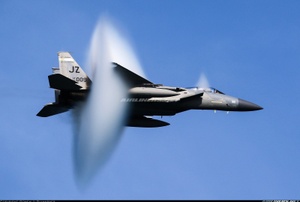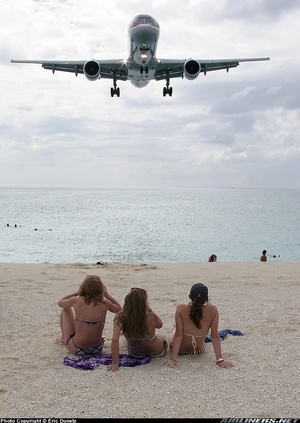Luscombe Spartan
Details
Country of Origin
United States of America
Type
Four seat light aircraft
History
The Spartan is a modern tricycle reincarnation of the late 1940s Luscombe 11A Sedan.
The four seat taildragger Sedan was based on the popular Silvaire (over 6000 built) and first flew on September 11 1946. Production ceased in 1949 by when 198 had been built. In the mid 1950s aeronautical engineer Alfred Ney purchased a damaged 11A and through until 1988 developed a number of changes for the aircraft which aided eventual development of the 11E. Ney's improvements included tricycle undercarriage, improvements to the handling characteristics and a more spacious cabin.
In 1992 Land Air Sales and Leasing Corporation purchased the 11's type certificate and then transferred it to the newly established Luscombe Aircraft Corporation which has set about re-engineering the 11 for its return to production as the 185-11E Spartan.
Las Vegas based Luscombe Aircraft Corporation converted a Sedan (N1674B) to act as a proof of concept aircraft while the first new build 185-11E prototype first flew on June 19 1998. Certification for the basic aircraft could be awarded as early as April 1999 with first deliveries (from the new factory at Altus, Oklahoma) following soon after.
The Spartan's most important changes compared with the Sedan are tricycle undercarriage and a six cylinder Teledyne Continental IO360 (derated from 157kW/210hp to 138kW/185hp). Other changes include a revised cowl shape for the new engine, a reprofiled windscreen, two overhead windows, modern avionics, soundproofing, inertia reel shoulder harnesses and dual vacuum pumps. Two optional avionics packages are offered.
A family of Spartan models is envisaged, including a 185 with a constant speed prop, the higher performance 157kW (210hp) IO-360 powered Spartan 210 and a turbocharged variant.
The Luscombe 8 Silvaire was a highly successful two seat high wing light aircraft built in the years surrounding World War 2. Today it remains popular as a classic aircraft.
Prior to introducing the Silvaire into production in 1937 Luscombe had built a small number of two seat high wing light aircraft, the most popular of which was the Phantom, which was powered by a 108kW (145hp) Warner Super Scarab radial engine. The initial Model 8A Silvaire was similar to the Phantom in configuration but differed in that it was powered by a 50kW (65hp) Continental A-65 engine. A more up market model was also built from 1939, featuring a higher level of standard equipment and improved cabin trim. The 8B was similar to the 8A other than it was powered by a 50kW (60hp) Lycoming.
In 1941 Luscombe released the 8C which featured a 55kW (75hp) Continental engine, and the 8D, which differed in having wingtip fuel tanks. Over 1200 Model 8s were built through to early 1942 when production ceased due to the United States' entry into WW2.
Shortly after the end of the war in late 1945 Luscombe resumed Silvaire production to meet the booming demand experienced by all US light aircraft manufacturers as returned military pilots wanted to continue flying in civilian life. From 1946 all Luscombes featured a new metal wing with a single strut. The first Silvaire to feature the new wing was the 8E, which was powered by a 65kW (85hp) Continental C8512 engine.
The final Silvaire production model was the 8F, which featured a 65kW (90hp) Continental C90. The 8A Sky Pal meanwhile was a lower powered variant of the 8F with a Continental C65.
Financial difficulties forced Luscombe to cease trading in 1949. US company Temco took over production and built a small number before it too ceased production in 1950. Finally, some Silvaires were built in Colorado between 1955 and 1960.
In 1998 a new plan emerged to re-introduce the 8F to production. Maryland based Renaissance Aircraft plans to re-certificate an improved 8F (powered by either a Lycoming O-320 or 110kW/145hp Walter HP) while production aircraft would be built by the Czech Aircraft Works. Renaissance estimates a unit price of $US50-70,000.
Powerplants
185 - One 138kW (185hp) Teledyne Continental IO360-ES4 flat six piston engine driving a two blade fixed pitch propeller. 210 - One 156kW (210hp) IO-360-ES driving a two blade constant speed propeller.
Performance
185 - Normal cruising speed 209km/h (113kt). Initial rate of climb 950ft/min. Service ceiling 18,000ft. Range 852km (460nm). 210 - Normal cruising speed 225km/h (122kt). Initial rate of climb 1050ft/min. Range 1448km (782nm).
Weights
185 - Empty 612kg (1350lb), max takeoff 1035kg (2280lb). 210 - Empty 658kg (1450lb), max takeoff 1035kg (2280lb).
Dimensions
Wing span 11.73m (38ft 6in), length 7.24m (23ft 9in), height 2.69m (8ft 10in). Wing area 15.5m2 (167.0sq ft).
Capacity
Standard seating for four.
Production
Approximately 300 ordered by late 1998. Certification and first deliveries planned for mid 1999. Altus factory could build up to 500 Spartans a year. 185 VFR base price at late 1998 $US138,500
Related Links
Luscombe Spartan
The backbone of this section is from the The
International Directory of Civil Aircraft by Gerard Frawley
and used with permission. To get your own copy of the book
click here.

















